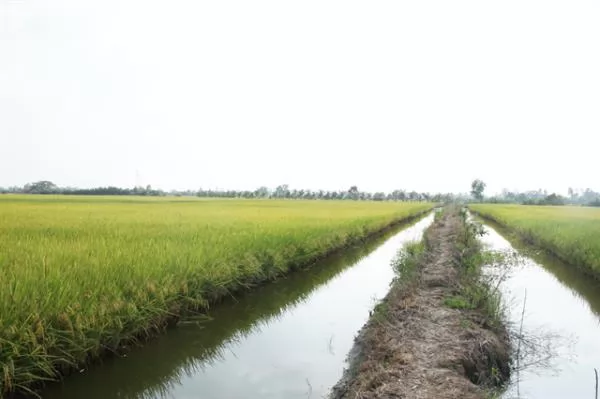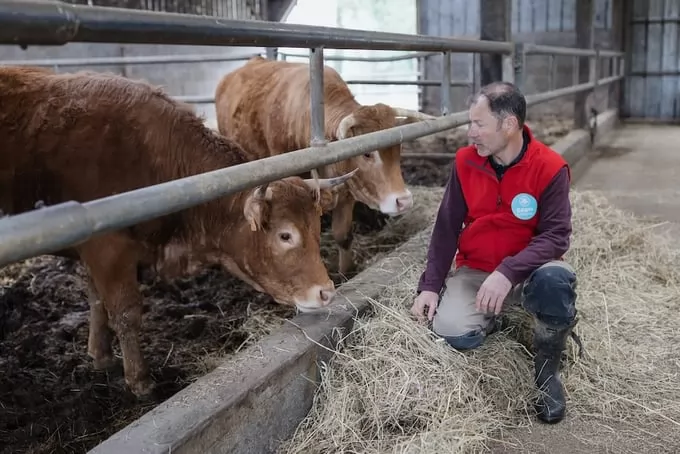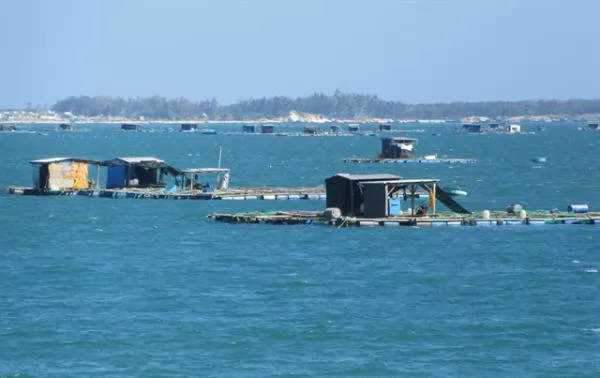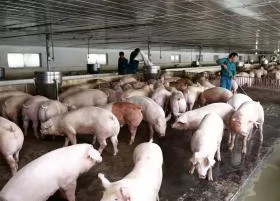High-tech shrimp farming brings high profits in Bạc Liêu Province

Rice - shrimp farming fields in Bạc Liêu Province's Hồng Dân District. — VNA/VNS Photo Chanh Đa
BẠC LIÊU — The Cửu Long (Mekong) Delta province of Bạc Liêu plans to expand super - intensive shrimp farming as it is sustainable and offers high production value.
The province, which is one of the country’s leading areas where shrimp is bred with advanced techniques, had more than 25,800ha of super-intensive and intensive shrimp farming areas last year.
Super- intensive shrimp farming offers a high yield of 40 – 50 tonnes per hectare per crop and a profit of US$1 billion (US$43,200) per hectare for three shrimp crops a year. It has a success rate of 80 – 90 per cent.
It uses shrimp breeding ponds with oxygenation facilities, anti-sunlight nets and plastic sheets on the bed.
The province has established a 418ha hi-tech agriculture zone for shrimp development in Bạc Liêu City’s Hiệp Thành Commune.
About 90 per cent of the construction of the hi-tech agriculture zone has been completed, and more than 30 companies have registered to invest in the zone.
In the zone, four companies and 76 households breed white- legged shrimp under the super-intensive farming model on more than 160 ha.
The zone will also produce shrimp fry and shrimp food to serve demand. Shrimp fry producers now produce 32 – 35 billion fry of white- legged shrimp and black tiger shrimp a year.
Last year, aquaculture production faced challenges because of drought, saltwater intrusion and the COVID-19 pandemic, but its output and yield rose after the province took preventive measures and set up proper breeding schedules.
The province’s aquaculture output and seafood catch reached 400,000 tonnes last year, including 200,000 tonnes of shrimp.
Last year, the province’s fishery sector accounted for 58 per cent of its agriculture production value.
Lưu Hoàng Ly, director of the local Department of Agriculture and Rural Development, said: “To achieve better results in aquaculture production this year, the province has invested more in infrastructure for shrimp cultivation, properly regulating water resources for shrimp cultivation and strictly managing input materials and shrimp fry for shrimp cultivation.”
Because saltwater intrusion in the ongoing dry season could occur in canals and ponds, shrimp breeders using super-intensive and intensive farming models should store fresh water in ponds and mix the fresh water with saline water in canals used for breeding shrimp, he said.
Shrimp breeders should not release shrimp for breeding this month because of prolonged hot weather. Off-season rains could also cause sudden changes in the breeding environment, he added.
To destroy disease pathogens and improve production efficiency, breeders should schedule a break between two shrimp crops, he said.
Besides super – intensive and intensive shrimp farming models, the province has developed other environmentally friendly models like rice – shrimp and shrimp – forest farming to produce clean shrimp for export and local consumption.
The province exported more than $800 million of seafood last year. It targets harvesting 414,400 tonnes of aquatic products from aquaculture and catches this year, up 3.6 per cent against last year, according to the department.
With a coastline of more than 56km, Bạc Liêu has high potential for shrimp cultivation, especially brackish water shrimp. The province has more than 136,000ha of shrimp cultivation area. – VNS
Maybe you are interested

Farmers shouldn't expand pig herds: ministry
Viet Nam News / HÀ NỘI — Farmers should not increase herds of pigs at present, though the market has seen a strong recovery in pig prices, according to the Ministry of Agriculture and Rural Development (MARD).

Europe's farmers are in revolt and the far right is trying to make hay
Farmers are mad about high costs and low prices, about the prospect of free trade deals, about the constraints of climate regulations, about what they say is a failure of political elites ...

Farmers expand breeding of high-value fish in floating cages in Ninh Thuận
NINH THUẬN - Farmers in the south-central province of Ninh Thuận are investing more in marine aquaculture as products could be sold for high price.





